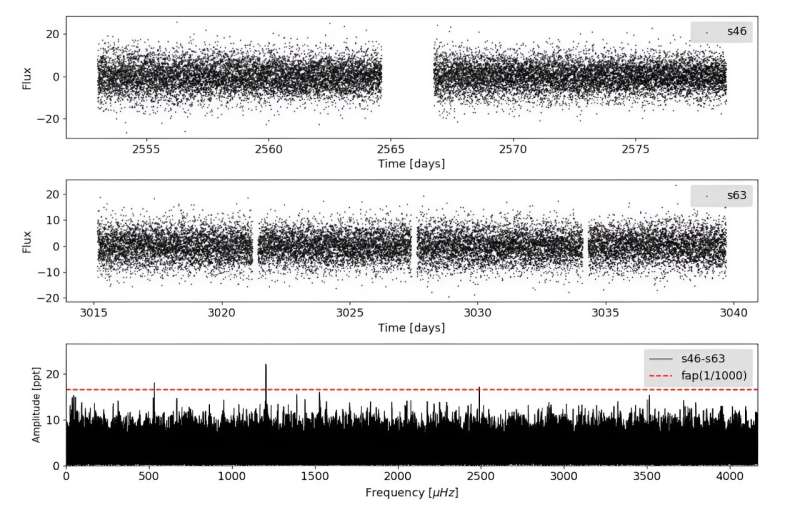July 17, 2024 report
This article has been reviewed according to Science X's editorial process and policies. Editors have highlighted the following attributes while ensuring the content's credibility:
fact-checked
preprint
trusted source
proofread
Astronomers detect dozens of new pulsating white dwarfs

Using NASA's Transiting Exoplanet Survey Satellite (TESS), astronomers have detected 32 new bright pulsating DA white dwarfs of the ZZ Ceti subclass. The finding was reported in a research paper published July 9 on the pre-print server arXiv.
White dwarfs (WDs) are stellar cores left behind after a star has exhausted its nuclear fuel. Due to their high gravity, they are known to have atmospheres of either pure hydrogen or pure helium. However, a small fraction of WDs shows traces of heavier elements.
In pulsating WDs, luminosity varies due to non-radial gravity wave pulsations within these objects. One subtype of pulsating WDs is known as DAVs, or ZZ Ceti stars—these are WDs of spectral type DA, having only hydrogen absorption lines in their spectra.
Now, a team of astronomers led by Alejandra D. Romero of the Federal University of Rio Grande do Sul in Porto Alegre, Brazil, reports the detection of 32 new ZZ Cetis. The discovery was made by analyzing the light curves of WDs and WD candidates obtained with TESS.
"In this work, we present the discovery of 32 new pulsating DA white dwarf stars, based on observations of the TESS mission from Sector 40 to Sector 69," the researchers write in the paper.
The median stellar mass for the newfound sample of ZZ Cetis is approximately 0.6 solar masses, which is generally in agreement with the mean stellar mass (0.64 solar masses) of 351 known objects of this type. The new pulsating DA white dwarfs were found to have effective temperatures within the range of 8,477–13,910 K.
Moreover, the astronomers detected a component of rotational splitting for nine objects reported in the study, with rotation periods from four hours to one day. The median for the rotation period for these objects was calculated to be approximately 13.6 hours. This is typical for WDs as they are generally slow rotators, with rotation periods between a few hours and several days.
By analyzing the newly discovered sample of pulsating DA white dwarfs, the authors of the paper also found a moderate correlation for both the photometric or spectroscopic and the seismological effective temperatures with the weighted mean period value. However, they did not find a strong dependence on the stellar mass.
Summing up the results, the researchers noted that their discovery increases the number of pulsating DA white dwarfs identified by TESS to 103, underlining how important this telescope is for such findings.
"In the first five years, TESS has already proven to be a powerful tool in discovering new pulsating white dwarfs," the scientists conclude.
More information: Alejandra D. Romero et al, Thirty Two New Bright ZZ Ceti Stars from TESS: Adding Cycles 4 and 5, arXiv (2024). DOI: 10.48550/arxiv.2407.07260
Journal information: arXiv
© 2024 Science X Network





















